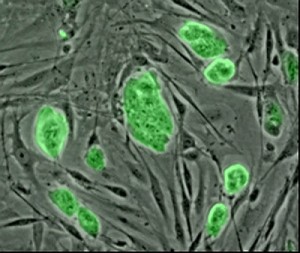
“This is an exciting opportunity to work with the most talented investigators in the field to accelerate the application of this promising technology to real patient benefits,” said Srivastava. Each research team will receive approximately $10 million dollars over 7 years as part of the larger NHLBI Progenitor Cell Biology Consortium, which will bring together researchers from the heart, lung, blood, and technology research fields.
iPS cells result from the “reprogramming” of adult cells into a cell closely resembling an embryonic stem cell. Like stem cells, they can develop into any cell type in the body. This exciting technology was developed by Gladstone investigator Shinya Yamanaka, MD, PhD. the 2009 Lasker Award Recipient for Biomedical Research.
The 17 multidisciplinary teams are organized into nine thematic research hubs. The research will be coordinated and administrated out of the University of Maryland-Baltimore.
While a stem cell can renew itself indefinitely or differentiate into an adult cell, a progenitor cell can only divide a limited number of times and is often more limited than a stem cell in the kinds of cells it can become. Given the potential of these cells for clinical applications, the goals of the consortium are to identify and characterize progenitor cell lines, direct the differentiation of stem and progenitor cells to desired cell fates, and develop new clinical strategies to address the unique challenges presented by the transplantation of these cells.
The joint Gladstone-Stanford project capitalizes on the synergy of Gladstone investigators expertise in guiding cardiac cell fate decisions and iPS technology, with the strengths of Stanford investigators in tissue engineering, use of large animals for pre-clinical trials and high-resolution imaging of cells placed into animal models for regenerative therapies. “This consortium brings together the leading scientists in this field in a large-scare coordinated effort that may be a ‘Manhattan Project’ of stem cell research,” Robbins said. “The aim is to investigate and evaluate the potential of this for the major diseases of our time.”